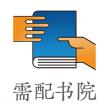
柔电子封装工艺建模与应用【正版新书】
正版新书出版社直发可开发票,支持7天无理由
¥ 140.4 7.1折 ¥ 198 全新
仅1件
江苏无锡
认证卖家担保交易快速发货售后保障
作者黄永安,尹周平,万晓东
出版社科学出版社
ISBN9787030625052
出版时间2020-03
装帧精装
开本其他
定价198元
货号1202010429
上书时间2024-07-01
- 在售商品 暂无
- 平均发货时间 14小时
- 好评率 暂无
- 最新上架
商品详情
- 品相描述:全新
- 商品描述
-
目录
Abbreviations
1 Advanced Electronic Packaging 1
1.1 Introduction 1
1.2 Adhesively Bonded Multilayer Structure 5
1.3 Interfacial Peeling-off 6
1.3.1 Needle Ejecting for Thin Chips 6
1.3.2 Conformal Peeling for Large-Area Devices 8
1.3.3 LLO for Large-Area Flexible Electronics 9
1.4 Vacuum-Based Chip Picking-up 12
1.5 Vacuum-Based Chip Placing-on 13
1.6 Competing Fracture 16
1.6.1 Competing Fracture Behavior 16
1.6.2 Fracture Strength and Adhesive Fracture Energy 16
References 17
2 Interfacial Modeling of Flexible Multilayer Structures 29
2.1 Introduction 29
2.2 Modeling of Chip-on-Substrate Structure 29
2.2.1 Mechanical Model 29
2.2.2 Analytical Evaluation on ERR of Interfacial Peeling 31
2.2.3 Virtual Crack Closure Technique (VCCT) 33
2.2.4 Numerical Model 34
2.3 Modeling of Chip-Adhesive-Substrate Adhesively Bonded Joints 34
2.3.1 Adhesive Model on Overlapped Joints 34
2.3.2 Equilibrium Equations 36
2.3.3 Establishment of Differential Equation Set 38
2.3.4 Solutions for Internal Forces and Displacements 40
2.3.5 Relationships Among Integration Constants 44
2.3.6 Theoretical Calculation of ERR of Interfacial Peeling 46
2.4 Summary 46
References 47
3 Measurement of Fracture Strength of Ultra-Thin Silicon Chip and Adhesive Fracture Energy 49
3.1 Introduction 49
3.2 Fracture Strength of Ultra-Thin Silicon Chip 50
3.2.1 Experimental Procedure 50
3.2.2 Nonlinear Mechanical Characterization in Bending Test 51
3.2.3 Estimation of Fracture Strength 58
3.3 Estimation of Adhesive Fracture Energy of Adhesive Tape 62
3.3.1 Theoretical Foundation 62
3.3.2 Experimental Procedure 64
3.3.3 Estimation of Adhesive Fracture Energy 64
3.3.4 Angle Dependence of Peel Force 65
3.3.5 Rate Dependence of Adhesive Fracture Energy 67
3.4 Summary 69
References 70
4 Tension-Assisted Peeling 73
4.1 Introduction 73
4.2 Theoretical Determination of Integration Constants 73
4.2.1 Stiffened Plate Joint Under Axial Tension and Bending Moment 74
4.2.2 Single-Strap Joint Under Tension 76
4.2.3 Single-Lap Joint Under Tension 79
4.3 Modeling of Adhesively Bonded Chip Array 82
4.3.1 Mechanical Model Description 82
4.3.2 Boundary and Continuity Conditions 84
4.3.3 Solution for Internal Forces and Displacements 85
4.3.4 Determination of Integration Constants 86
4.4 Adhesive Stresses for Adhesively Bonded Joints 87
4.4.1 Analysis of Balanced Adhesively Bonded Joints 87
4.4.2 Analysis of Unbalanced Adhesively Bonded Joints 90
4.4.3 Discussion of Results 92
4.5 Peeling Behavior for Chip Array on Stretched Substrate 93
4.5.1 Adhesive Stresses 93
4.5.2 Effect of Geometric Dimensions 95
4.5.3 Effect of Material Properties 98
4.5.4 Process Optimization 100
4.6 Summary 101
References 102
5 Single-Needle Peeling 105
5.1 Introduction 105
5.2 A Case for Chip-on-Substrate Structure 107
5.2.1 EfiFect of Crack Length 108
5.2.2 Effect of Geometric Dimensions 108
5.2.3 Effect of Elastic Mismatch 110
5.3 A Case for Chip-Adhesive-Substrate Structure 111
5.3.1 Geometric Model Description 111
5.3.2 Theoretical Calculation of ERR 115
5.33 Effect of Crack Length 116
5.3.4 Effect of Geometric Dimensions 117
5.3.5 Effect of Material Properties 118
5.3.6 Analysis on Tunability of Peeling Mode 119
5.4 Analysis of Fracture Mode Based on Competing Index 121
5.4.1 Typical Fracture Modes 121
5.4.2 Competing Fracture Model 123
5.4.3 Basic Fracture Parameters 124
5.4.4 Effect of Geometric Dimensions 125
5.4.5 Discussion on Results 127
5.5 Impact Effect of Needle Peeling-off Process 130
5.5.1 Failed Sample Observation 130
5.5.2 Numerical Model 130
5.5.3 Effect of Impact Speed 132
5.5.4 Effect of Substrate Penetration 134
5.6 Summary 135
References 137
6 Multi-Needle Peeling 139
6.1 Introduction 139
6.2 Mechanical Model of Multi-Needle Peeling-off 140
6.2.1 Model Description 140
6.2.2 Boundary and Continuity Conditions 142
6.2.3 Determination of Integration Constants 144
6.3 Competing Fracture Model of Chip-Adhesive-Substrate Structure 147
6.4 Analysis of Bending Normal Stress and ERR of Interfacial Peeling 151
6.4.1 Analysis of Bending Normal Stress 151
6.4.2 Analysis of ERR of Interfacial Peeling 154
6.5 Effect of Chip Geometry on Competing Fracture Behavior 156
6.5.1 Effect of Chip Thickness 156
6.5.2 Effect of Chip Length 158
6.6 Experimental Validation 160
6.7 Summary 162
References 163
Conformal Peeling 165
7.1 Introduction 165
7.2 Modeling of Conformal Peeling for Multilayer Structure 166
7.3 Effect of Material Properties and Geometric Size 174
7.3.1 Effect of Young’s Modulus of Device Layer 174
7.3.2 Effect of Young’s Modulus of Adhesive Layer 176
7.3.3 Effect of Device Thickness 179
7.3.4 Effect of Substrate Thickness 181
……
内容摘要
性电子转印是实现器件功能封装、产品包装必须要解决的核心工艺之一。面对日趋超薄化的芯片,实现其无损转印对于降低封装成本,提高产品成品率、改善器件可靠性等有着显著意义。本书从建模、机理和工艺等方面入手,先针对单顶针和多顶针推顶剥离方式下的超薄芯片无损剥离技术进行了深入分析;接着,以器件层-粘胶层-载带层柔性三层结构为对象,研究了基于卷到卷系统的辊筒共形剥离和卷到卷转移工艺;然后,针对厚度可能仅为几微米的更薄芯片,初步探索了更加优选和具有挑战性的激光转移技术;之后,对目前关于转印技术的研究现状进行了总结分析;最后,对芯片真空拾取和贴装工艺进行了探讨,建立了真空拾取与高密度贴装的理论工艺窗口。
— 没有更多了 —












以下为对购买帮助不大的评价